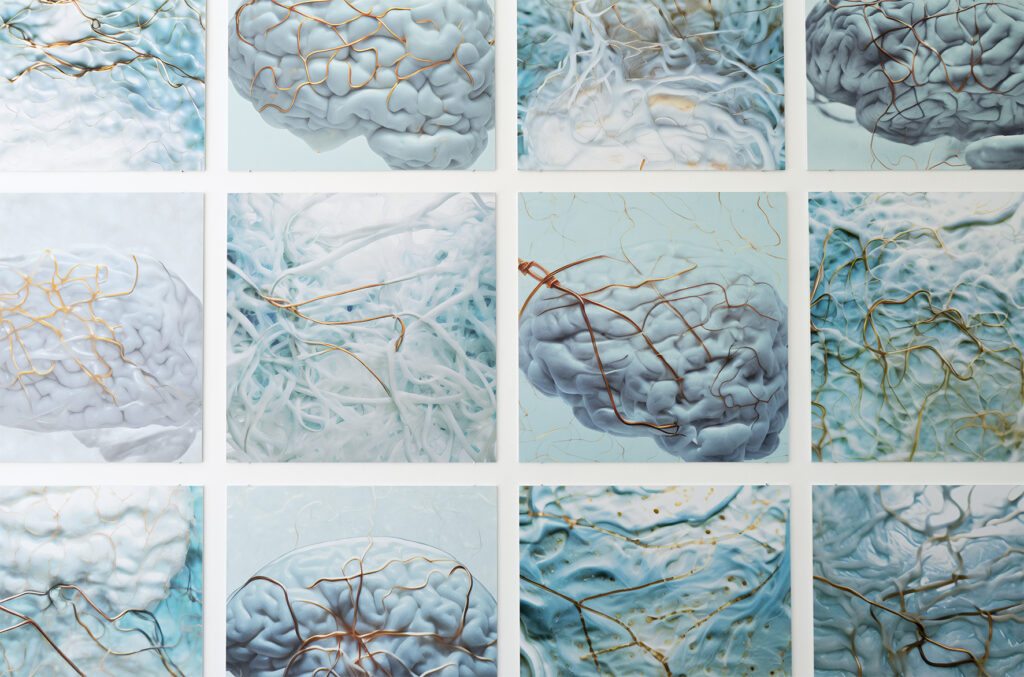In Virgin Soil Upturned, the artist Matthias Sildnik invites us to explore networks as information-processing landscapes waiting to be conquered, sites where intensive flows of data deform the very terrain they spread across.
A series of wall-mounted panels depict the intricate network of neurons that make up the brain. The panels are alive with energy, creating a dynamic and immersive environment that highlights the brain’s ability to adapt and change in response to new experiences, learning, and environmental stimuli. The brain’s neuroplasticity makes it malleable and dynamic, able to reorganise itself (like networks and markets) in response to new data and stimuli. The two main types of neuroplasticity are functional plasticity (the brain’s ability to move functions from a damaged area of the brain to other undamaged areas) and structural plasticity (the brain’s ability to alter its physical structure as a result of learning). Together this agile flexibility in processing concepts helps us learn new things, enhances our existing cognitive abilities, our capacity to recover from traumatic brain injuries (including strokes), enhances brain fitness, and strengthens areas where cognitive function is in decline or lost altogether. Can the same be said of deregulated financial markets, or is this flogging an already tired metaphor to death (another deformation of terrain)? And what of the ‘virgin soil’ in each analogy that is thereby disturbed and upturned?
Prominent in the exhibition are two binary trees made of copper that form a probe-like structure, somewhat resembling an unsuccessful attempt to fix a rooftop aerial. The binary tree is a common data structure in computing, and the artist has used 45-degree angles for the branches, a familiar graphic design technique to visualize relations between subway stations. The use of copper wire recalls the era of the telegraph, another network infrastructure, one associated with the Bolshevik revolution where Lenin focused on gaining control over telegraph lines, postal services, and train stations. A society, like the individual brain, is constantly building new neural connections and pathways in response to new experiences and stimuli.
Sildnik thus combines computing concepts and historical references to link the brain’s network of neurons to transportation networks that connect people and ideas across vast distances, asking in the process how our relationship with technology continues to shape our understanding of the mind. The metaphors that seep across our understanding of networks, neurons, civil infrastructures, markets, and thought itself may be virgin soil or, equally, the data that deforms.
Rolf Hughes, PhD
Professor of Epistemic Practices | KU Leuven |
Member of Editorial Board, Architecture and Culture
Research Groups: Epistemic Practices, Regenerative Architecture, Arts & Design (RAAD),
Department of Architecture | Faculty of Architecture
Hoogstraat 51, 9000 Ghent / Paleizenstraat 65, 1030 Brussels

